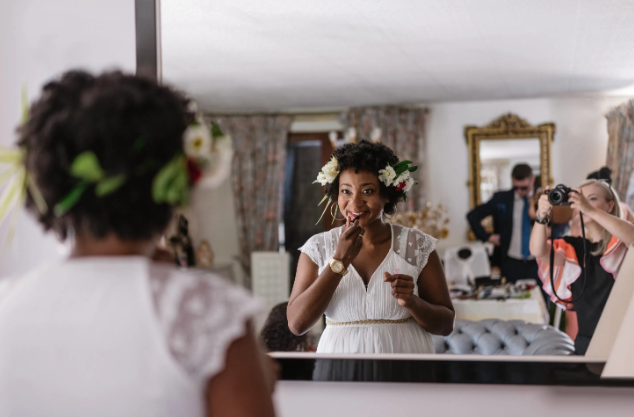Nil Rate Band (NRBDT)

NRBDTs are simply discretionary trusts that take assets up to the value of the Nil Rate Band (NRB). Discretionary Trusts are relevant property trusts and, therefore, their own legal entity for IHT purposes. The assets held in the trust are seen as owned by the trust and not by the trust’s beneficiaries and, therefore, are not part of the beneficiaries’ taxable estates.
The trust would commonly name the surviving spouse and others (usually children and remoter descendants) as potential beneficiaries of the trust. The trustees would then allow the surviving spouse access to capital, often through a loan repaid on the survivor’s death and could also provide for a child’s education and welfare.
A letter of wishes (LOW) is typically drafted alongside a will to provide guidance to the trustees on how to act. This letter usually specifies that the spouse should be regarded as the primary beneficiary, and assets are then distributed to the children upon the spouse's death.
Whilst the introduction of the Transferable NRB (TNRB) has led to a decrease in the use of Nil-Rate Band Discretionary Trusts, there are still two main scenarios when an NRBDT will be useful to clients and some less common uses.
Unmarried Couples

Unmarried couples do not benefit from either the spousal exemption, the TRNB or the transferable Residential Nil Rate Band (RNRB). The estates of an unmarried couple leaving everything to each other would, therefore, be considered for IHT on both the first death and second death and without the benefit of two NRBs on the second death. This could lead to an unnecessarily high IHT charge on the second death.
The solution would be to use a NRBDT. Any assets passing to the trust would remain outside the partner’s estate for IHT purposes, but they could continue to benefit from those assets.
The advantage of using a NRBDT here is best shown by example:
John and Jane are a married couple owning £300,000 each. They have no joint children, but John has children from a previous relationship.
John dies first, leaving his estate to her outright. No IHT is due on his death, thanks to the spousal exemption, and his unused NRB (and RNRB) are available to transfer to Jane. On Jane’s death, she passes her estate of now £600,000 to John’s children. As her estate benefits from her own NRB and John’s unused NRB, no IHT will be payable upon her death. Whilst her estate does not need RNRB, stepchildren are classed as direct descendants for the purpose of RNRB.
Imagine this same scenario, but John and Jane were not married. No IHT would be payable on John's death as his estate is below the NRB. However, on Jane’s death, her estate will only benefit from her own NRB. This would mean that £275,000 out of her £600,000 estate would be taxable at 40%. Her estate would also not qualify for RNRB, as her late partner’s children would not come under the definition of direct descendants for RNRB purposes.
If John and Jane had used NRB Discretionary Trusts, on John’s death no IHT would be payable as his estate is below the NRB. All his assets would pass to the trust. Jane will only own £300,000 worth of assets after her death. This is below the NRB, so it will pass IHT free to John’s children.
Remarried Widows/ Widowers

S8A Inheritance Tax Act 1984 provides that a person may only benefit from a single additional NRB. This can be transferred from multiple Late Spouses but can never exceed 100% of the current NRB allowance. This could leave a remarried widow in a difficult IHT position. They may have an available NRB from their late spouse. Should they leave their entire estate to their new spouse, or alternatively, should the new spouse die and leave everything to the widow, only one additional NRB can be claimed on the second death, wasting the possible third.
The solution would be for both to leave assets equal to one NRB into a NRBDT, with the remaining passing outright to the survivor. This means that should the widow die first, one of their NRBs can be used towards the assets passing to the NRBDT, with the other available to be claimed by the survivor on the second death. Should the new spouse die first their NRB can be used towards the assets passing into the trust, allowing the widow to claim their own NRB plus the NRB from their first spouse. So they have effectively benefitted from their own NRB and two additional NRBs.
This type of planning is extra effective if both testators have had a previous marriage end in death as it allows four NRBs to be utilised.
Example: Tony’s first wife died in 2001 leaving her estate to him. In 2010, he married Sian. Sian was also a widow whose first husband died in 2004, leaving his estate to her. Tony and Sian both include a NRB trust in their wills benefiting each other and their children, expressed to take their own and any transferable NRB available to them. Tony dies first. His NRB plus the TNRB from his late wife pass to the trust; everything else passes to Sian. When Sian dies her estate will still benefit from her own NRB plus the TNRB from her first husband. In total four NRBs have been utilised. Without the NRB trust, only two NRBs would have been used, and the additional two lost.
Wait & See
A testator may wish to take a ‘wait and see’ approach to providing for their family. They may want to pass the NRB to their children or other beneficiaries directly but want to make sure that the trustees can assess the family’s circumstances before making any decisions about how to administer the trust.
It may be that the children are young at the time of writing the will or their future needs are unclear. At death, the trustees can assess the situation and provide for the beneficiaries accordingly. In this respect, the benefits of using the NRB trust largely mirror those of an ordinary discretionary trust—flexibility, discretion over how to distribute income and capital, and protection of assets and beneficiaries.
The testator may want to include the spouse as a potential beneficiary as they would want the trustees to be sure that no additional provision would be needed for the spouse before they distribute to the other beneficiaries. If they felt that the trust assets would need to be utilised to support the surviving spouse, then the trustees could defer distribution to the children until either the spouse died or their needs changed.
Reducing IHT on 2nd death
If the intention is for the residuary estate to be held on relevant property trusts on the second spouse's death, then for IHT reasons it may be a good idea to include a NRB trust in the first spouse's will. The relevant property IHT charges after the second spouse's death would be reduced by virtue of the fact that there are two trusts (and two NRBs) instead of one. As the first trust was created by the first spouse and the second trust by the second spouse, they would not be related settlements for IHT purposes. If instead the first to die had simply passed their estate to the spouse, and then on second death all of the combined estate had passed to a discretionary trust for the descendants the relevant property charges that the trust would suffer would be greater. The trust would hold more assets but still only benefit from one NRB when calculating charges. For example:
With NRB trust: Henry has an estate worth £500,000. On his death he leaves his NRB to a NRB trust for his wife Angela and descendants and the residue of his estate to his wife. There is no IHT to pay. Angela has an estate worth £400,000. On her death she leaves her estate to a discretionary trust for her descendants. She has a small amount of IHT to pay as the assets passing to the trust exceed her NRB of £325,000. Going forward there are no regular IHT charges on the trust created by Henry’s will. Charges on Angela’s trust will only be calculated by reference to the value of the assets in that trust over the NRB (£75,000 to begin with). Henry’s trust is a separate settlement.
Without NRB trust: Same values as above, but this time Henry simply leaves his estate to Angela directly. When Angela dies her estate is worth £725,000. The amount of IHT payable on Angela’s death remains the same. The ongoing charges on the trust created on Angela’s death will be higher though, as the value of the assets over the NRB when calculating the charges is now £400,000.
Reducing Anniversary and Exit Charges

If a married couple intend to place the estate into a discretionary trust on second death and have assets over the value of the NRB, they could also consider placing assets into a NRBDT on first death.
If their combined estates are over the value of one NRB, if the whole combined estates were placed into one discretionary trust on the second death, this would mean that anniversary and exit charges would apply to the discretionary trust.
Placing assets into an NRBDT, on the second death ensures there will be two trusts in existence at the second death. They would each have their own NRB, which could reduce or completely eliminate the potential anniversary of exit charges of the trusts.
This would, however, mean that the transferable NRB would not be available to the surviving spouse.
RNRB – Taper Threshold
A slightly more niche use of an NRB trust is to direct assets away from the surviving spouse so that on second death their estate doesn’t exceed the taper threshold for the residence nil rate band (RNRB).
The Residence Nil Rate Band (RNRB) has become a key component in inheritance tax planning for married couples. The RNRB taper threshold (currently £2 million) is becoming is increasingly significant. As more estates approach the threshold, care planning is essential. This article covers what planning can be used to mitigate the impact of the taper.
Understanding the Allowances
The Nil Rate Band (NRB) is the standard inheritance tax threshold, currently £325,000 per person. The RNRB, in short, applies where a person leaves their main residence to their direct descendants and is an additional £175,000 per person. Both allowances are transferable between spouses if unused, so a married couple can potentially pass on up to £1 million tax-free.
There is however the RNRB taper threshold to consider. This is currently £2 million and is frozen at this value until April 2030. For every £2 that an estate is over this threshold, the RNRB is reduced by £1, and is lost entirely once the estate exceeds £2.35 million (or £2.7 million for a couple with full transferable RNRB).
The Problem: The Taper Trap
Many couples find their combined estates hovering around the £2 million RNRB taper threshold. If all assets pass to the surviving spouse on first death, the survivor’s estate may exceed the taper threshold, resulting in a significant loss of the RNRB on second death.
This problem is only going to become more commonplace in the coming years due to the proposed changes to make pensions taxable for inheritance tax from April 2027, as this will bring many more estates close to or above the RNRB taper threshold.
The Taper Trap Example
Mr and Mrs Brown have a combined estate valued at £2.4 million, including their family home. They have two children and wish to leave their estate to each other on first death, and then to their children on second death.
On Mr Brown’s death, all assets pass to Mrs Brown. No inheritance tax (IHT) is payable due to the spouse exemption. On Mrs Brown’s death, her estate is valued at £2.4 million.
If there was no taper threshold
If there was no RNRB taper threshold, inheritance tax would apply as follows:
- Total tax-free allowance: £650,000 (2x NRB) + £350,000 (2x RNRB) = £1 million
- Taxable estate: £2.4 million – £1 million = £1.4 million
- IHT: £1.4 million × 40% = £560,000
With the taper threshold
Due to the operation of the taper threshold however the RNRB is reduced by £1 for every £2 over the threshold for Mrs Brown’s estate. The estate is £400,000 over the threshold, therefore RNRB is reduced by £200,000. This leaves an available RNRB of £150,000.
Mrs Brown’s inheritance tax would therefore be calculated as follows:
- Total tax-free allowance: £650,000 (2x NRB) + £150,000 (tapered RNRB) = £800,000
- Taxable estate: £2.4 million – £800,000 = £1.6 million
- IHT: £1.6 million × 40% = £640,000
The additional inheritance tax due to the lost RNRB is therefore £80,000.
The Solution: Nil Rate Band Discretionary Trusts
A Nil Rate Band Discretionary Trust in a will can be a useful tool in these circumstances. On the first death, assets up to the NRB (currently £325,000) are diverted into a discretionary trust rather than passing outright to the surviving spouse. The trust can include the spouse and children as potential beneficiaries.
The trustees, guided by a letter of wishes, can allow the spouse to be the main beneficiary whilst they are alive. However, as the trust is a discretionary trust the trust fund is not taxed as part of the survivor’s estate on their death.
By removing these assets from the survivor’s estate, the total value on second death may be kept below the £2 million threshold, preserving the full RNRB, or keep the estate not as high above the taper threshold and ensuring more RNRB is available. This approach is particularly effective where the estate is just over the threshold and lifetime gifting is impractical.
Nil Rate Band Discretionary Trusts Example
Let’s return to Mr and Mrs Brown. Instead of leaving their estates to each other outright, they incorporate Nil Rate Band Discretionary Trusts.
On Mr Brown’s death, his estate up to his NRB passes to trust and the remainder to Mrs Brown. On Mrs Brown’s death, her estate is £2.075 million. £325,000 is outside of her estate held by the Nil Rate Band Discretionary Trusts.
Her estate is still over the taper threshold, but not as significantly as it was previously. It is only £75,000 over the threshold and therefore RNRB is reduced by £37,500. This leaves an available RNRB of £312,500.
Mrs Brown’s inheritance tax would therefore be calculated as follows:
- Total tax-free allowance: £325,000 (NRB) + £312,500 (tapered RNRB) = £637,500
- Taxable estate: £2.075 million – £637,500 = £1,437,500
- IHT: £1,437,500× 40% = £575,000
The use of a Nil Rate Band Discretionary Trust saves Mrs Brown’s estate £65,000 in inheritance tax.
Alternative – Nil Rate Band Gift
For couples seeking a simpler alternative to trusts, an alternative to using a Nil Rate Band Discretionary Trust is to make a direct gift of assets up to the NRB to children (or other beneficiaries) on first death. This achieves the same outcome of avoiding inflating the survivor’s estate above the taper threshold, without the additional complexity of a trust.
However, this approach is only suitable where the couple is comfortable with the children receiving assets outright on first death. It may not be appropriate in situations where:
- The children are young or financially inexperienced.
- There are concerns about future divorce or third party claims.
- The surviving spouse may need access to the full estate for financial security.
In such cases, a Nil Rate Band Discretionary Trust offers greater control and flexibility.
Conclusion
For couples whose estates are close to the RNRB taper threshold, Nil Rate Band Discretionary Trusts offer a useful and flexible inheritance tax planning tool. They can help preserve the RNRB while still allowing the surviving spouse to benefit. As inheritance tax continues to evolve, particularly with the proposed changes to pension taxation, Nil Rate Band Discretionary Trusts are likely to become an essential component of estate planning once again.
All references in this article to spouses, married couples and marriage also include civil partners and civil partnerships.
With Thanks to Chris Rattigan-Smith from our WillPack back office team.


